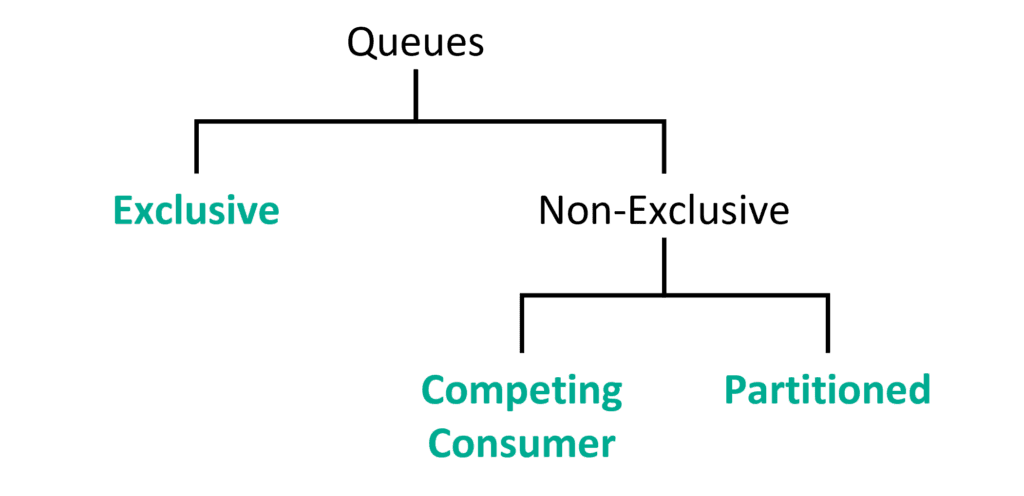In the realm of event-driven architecture, the choice of messaging patterns and queue types plays a pivotal role in delivering efficiency, reliability, and scalability of your applications in this asynchronous and decoupled pattern.
Solace provides a robust and versatile platform that empowers you to build highly efficient, reliable, and scalable event-driven systems. By understanding the different messaging patterns, queue types and how they work together to support your business objectives, you can make informed decisions that align with your business needs
Messaging Patterns
Messaging patterns dictate how messages are exchanged between applications. PubSub+ Event Broker supports several key patterns, each with its unique characteristics and use cases.
Publish/Subscribe
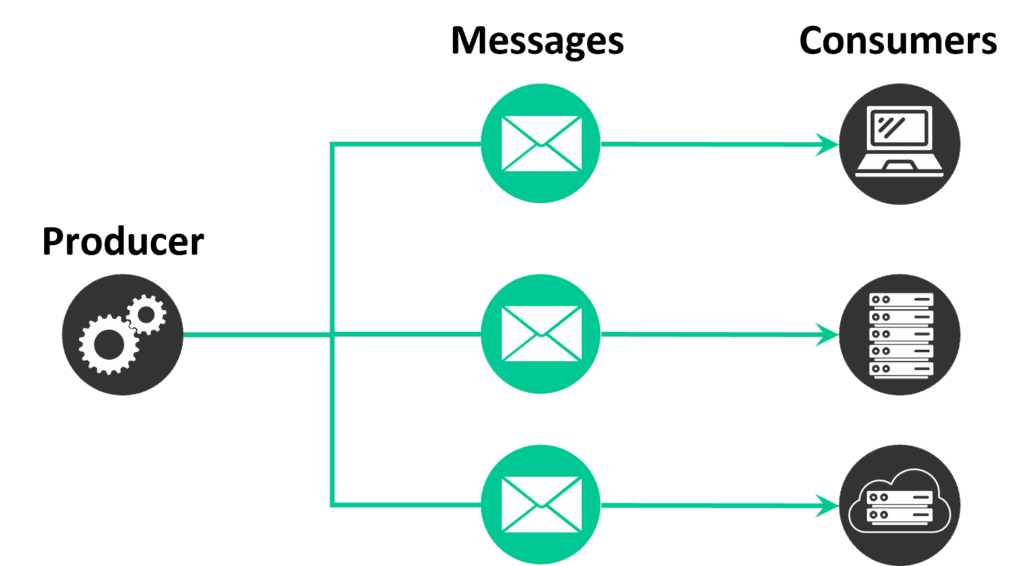 This pattern is ideal for scenarios where multiple applications need to receive the same information, such as real-time data distribution, event notifications, and IoT applications.
This pattern is ideal for scenarios where multiple applications need to receive the same information, such as real-time data distribution, event notifications, and IoT applications.
Point-to-Point

Request/Reply
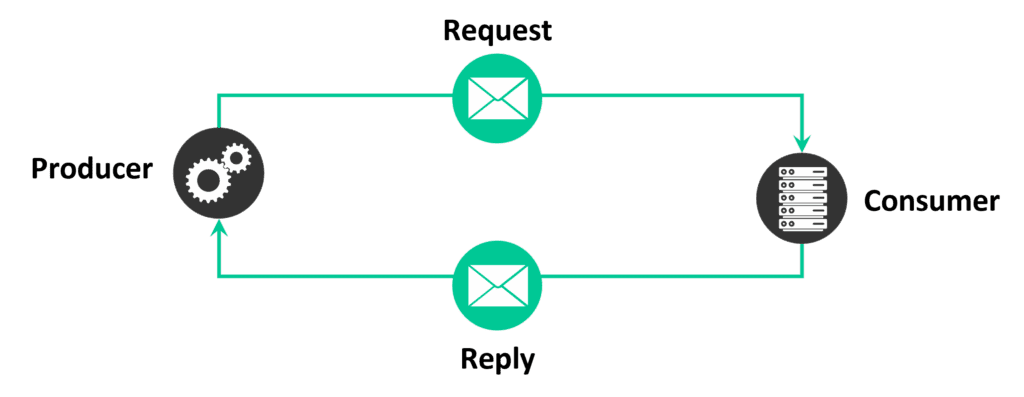
Queue Types
Queueing enables the storage and forwarding of messages and helps to ensure that they arrive at their destination. Solace gives many options to how those messages are queued, with the most common including exclusive queues and two types of non-exclusive queues: competing consumer and partitioned queues.
Exclusive
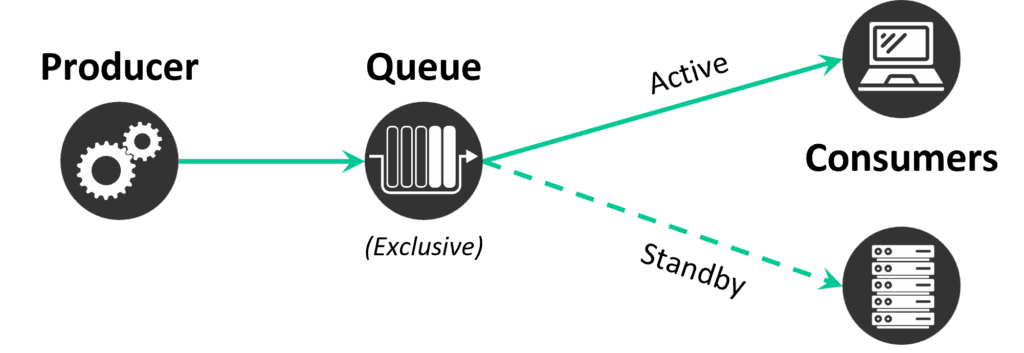
Competing Consumer
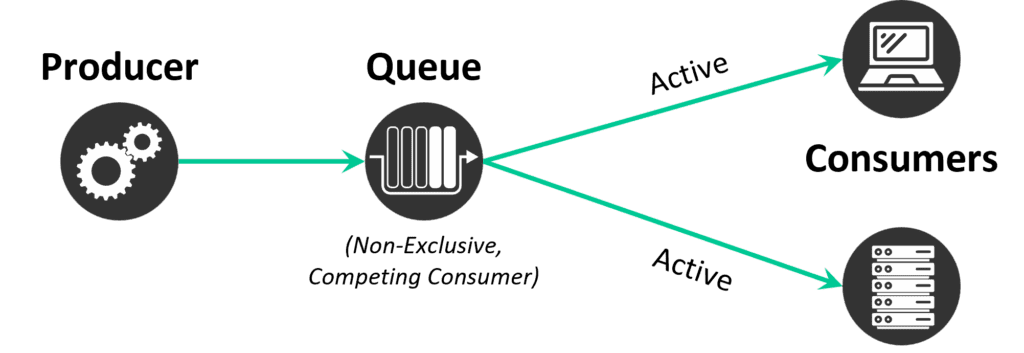
Partitioned
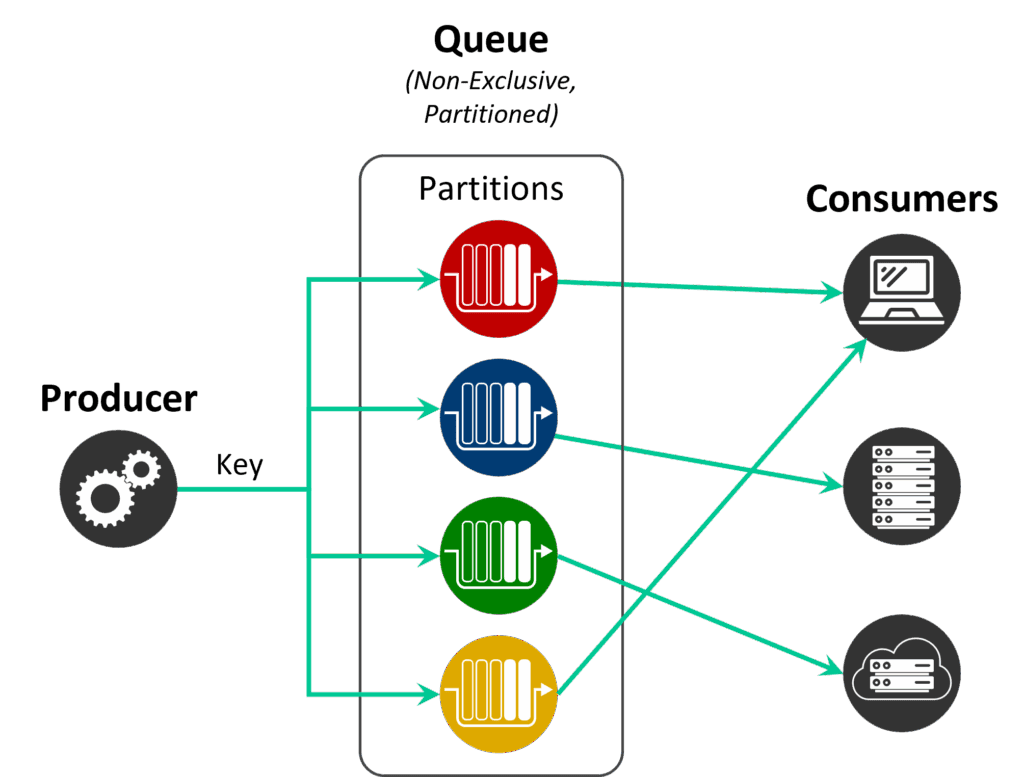
Other Queue Types
- Durable Queues for Persistent Message Storage: Durable queues persist messages to disk, ensuring that messages are not lost in the event of a failure. This queue type is crucial for critical applications where message persistence is paramount. Durable queues allow for guaranteed delivery.
- Temporary Queues for Ephemeral Messaging: Temporary queues are created dynamically and exist only for the duration of a client connection. They are not persisted to disk. This queue type is useful for short-lived messaging scenarios where message persistence is not required; such as request/reply scenarios.
- Dead Message Queues for Undeliverable Messages: DMQs are special queues that store messages that could not be delivered to their intended destinations. Messages may be moved to a DMQ due to various reasons, such as exceeding the maximum delivery attempts or reaching the time-to-live limit. DMQs provide a mechanism for analyzing and reprocessing undeliverable messages, ensuring that no message is lost.
- Priority Queues for Message Prioritization: Priority queues allow you to assign priorities to messages, ensuring that high-priority messages are processed before low-priority messages. This queue type is useful for applications where certain messages are more critical than others.
Choosing the Right Combination
Solace lets you combine messaging patterns and queue types to create tailored solutions for specific use cases. Let’s explore a few examples:
- For real-time data distribution, use the publish/subscribe pattern with durable queues to ensure that all subscribers receive the latest information, even in the event of a broker failure.
- For order processing, use point-to-point messaging with exclusive queues to ensure that each order is processed by only one consumer in the correct order.
- For request/reply scenarios, use temporary queues to avoid persisting messages that are only needed for the duration of the request.
- For applications with bursty traffic, use non-exclusive queues with competing consumers to distribute the workload.
- For critical financial applications, use priority queues, and durable queues.
Learn More

